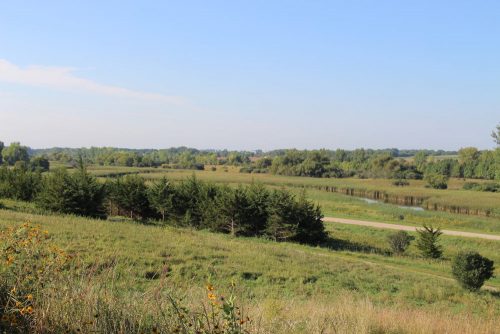Lately, Mary and I have been taking our morning constitutional strolling around the horticulture gardens, over by the Pomme de Terre river.
It’s pretty, but OMG IT’S SEPTEMBER. Everything is going to die soon and freeze and be covered with snow, so we’ve got to get our walking in now.
At least one good thing is that we’re seeing a fair number of monarchs, and the next generation is growing fast.




Is it going to die because of the monarchs ?
I want to bathe in that river, just because of the name.
I know what you mean. Over here, we’re already seeing Summer fading to Summer, on its way to Half-Assed-Fall-Spring-Kinda-Thing.
You have a Potato river?
Yeah really. That’s not a good name for a river. Better than rutabaga I guess.
The Pomme de Terre river and lake are named for the local native prairie turnips that used to grow there in abundance. They were a staple food of the Dakota and other plains tribes. Psoralea esculenta
That final sentence simply had to be quoted, in light of the recent Dinner at the Petersens thread.
Can’t wait for Autumn. Best time of year.
In Winter, that same scene will have an austere beauty that is special in its own way. And anyone who thinks it will all be dead needs to read more Bernd Heinrich.
I wonder if many Devo fans know about the name. Spud boys would love it.
Whilst on the other side of the Pacific; OMG IT’S SEPTEMBER EVERYTHING IS GOING TO BE ON FIRE.
https://www.npr.org/2018/08/15/639001357/by-creating-habitats-for-monarch-butterflies-in-cities-scientists-hope-to-save-t